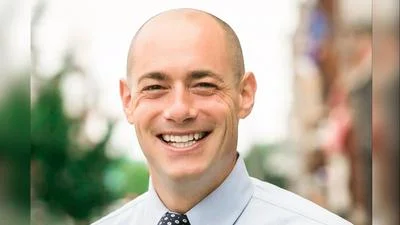The Grateful Dead, and other rock 'n' roll bands, visited Cincinnati's music venues. | Leib Meadvin/Facebook
The Grateful Dead, and other rock 'n' roll bands, visited Cincinnati's music venues. | Leib Meadvin/Facebook
A new book by Citybeat Arts & Culture Editor Steve Rose titled "Lost Cincinnati Concert Venues of the ‘50s and ‘60s" details the impact that the city had on the music scene during that area.
Citybeat reported that a Grateful Dead concert in 1968 was a turning point for the band’s career and Rosen said that those two decades were the bedrock of rock music.
“If you’re going to write a book like this and try to have something timely, it really starts with the ’50s,” Rosen told Citybeat.
"Cincinnati made history, in a sense," Citybeat said. "That event was nothing less than a culture shock for an area with manicured lawns and wholesome activities. Teenagers were building their own makeshift lightshows to be used in the venue, local press was abuzz about the Dead’s pioneering Psychedelic sound and parents were quickly forced to become aware of LSD evangelists like Wavy Gravy and Ken Kesey."
The book details the venues that were paramount to the rise of Rock & Roll with Rosen highlighting facilities that were critical to drawing some of the most endearing entertainers of the genre to Cincinnati, Citybeat said.
While he was growing up, Rosen was a regular at underground establishments such as Black Dome before going to college at Indiana University in 1968, which ignited his passion for America’s rock scene. The book examines defunct venues in the Queen City that were once vibrant with the sounds of music, Citybeat said.
The author tells the story of Cincinnati Gardens throughout the book. The early days of the venue, which opened in 1949 were a “golden age for Rock & Roll/R&B package shows,” Rosen said.
"The venue hosted now-legendary acts like Buddy Holly, The Chantels and Chuck Berry in their heyday," Citybeat said.
"At roughly the same time, on the other side of the river, Newport’s Copa Club was booking a who’s-who list of Black performers that have since been classified as iconic," Citybeat said. "Over the course of a single year, attendees saw Miles Davis, Sam Cooke, the Isley Brothers and a host of other talented entertainers.
"Rosen’s dropping of names of that caliber passing through Cincinnati between 1957 and 1960 is impressive, but the stories of what came after — reconstructed from old newspaper articles as well as new interviews with those who were there — are what make his book such an immersive read."
Rosen said that stars such as Santana, The Kinks and Procol Harum played in local venues that are no longer around and wanted to highlight them in his book.




 Alerts Sign-up
Alerts Sign-up